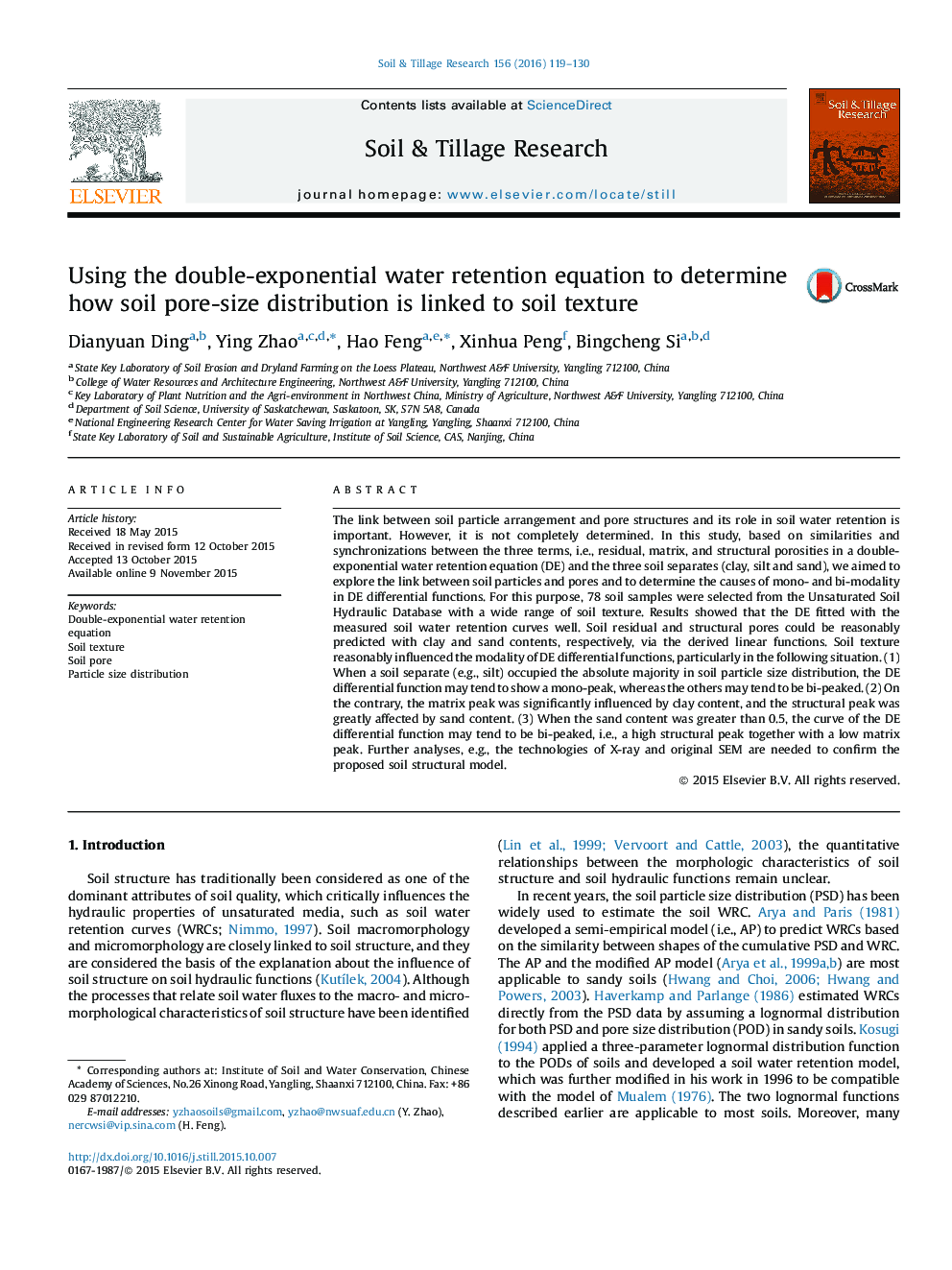| کد مقاله | کد نشریه | سال انتشار | مقاله انگلیسی | نسخه تمام متن |
|---|---|---|---|---|
| 305395 | 513027 | 2016 | 12 صفحه PDF | دانلود رایگان |
• Structural pore in double-exponential equation (DE) could be fitted with sand content.
• Residual pore in DE equation could be reasonably fitted with clay content.
• One dominated soil separate would lead to the mono-peaked DE differential function.
• If the sand content was >0.5, DE differential functions would tend to be bi-peaked.
The link between soil particle arrangement and pore structures and its role in soil water retention is important. However, it is not completely determined. In this study, based on similarities and synchronizations between the three terms, i.e., residual, matrix, and structural porosities in a double-exponential water retention equation (DE) and the three soil separates (clay, silt and sand), we aimed to explore the link between soil particles and pores and to determine the causes of mono- and bi-modality in DE differential functions. For this purpose, 78 soil samples were selected from the Unsaturated Soil Hydraulic Database with a wide range of soil texture. Results showed that the DE fitted with the measured soil water retention curves well. Soil residual and structural pores could be reasonably predicted with clay and sand contents, respectively, via the derived linear functions. Soil texture reasonably influenced the modality of DE differential functions, particularly in the following situation. (1) When a soil separate (e.g., silt) occupied the absolute majority in soil particle size distribution, the DE differential function may tend to show a mono-peak, whereas the others may tend to be bi-peaked. (2) On the contrary, the matrix peak was significantly influenced by clay content, and the structural peak was greatly affected by sand content. (3) When the sand content was greater than 0.5, the curve of the DE differential function may tend to be bi-peaked, i.e., a high structural peak together with a low matrix peak. Further analyses, e.g., the technologies of X-ray and original SEM are needed to confirm the proposed soil structural model.
Journal: Soil and Tillage Research - Volume 156, March 2016, Pages 119–130
